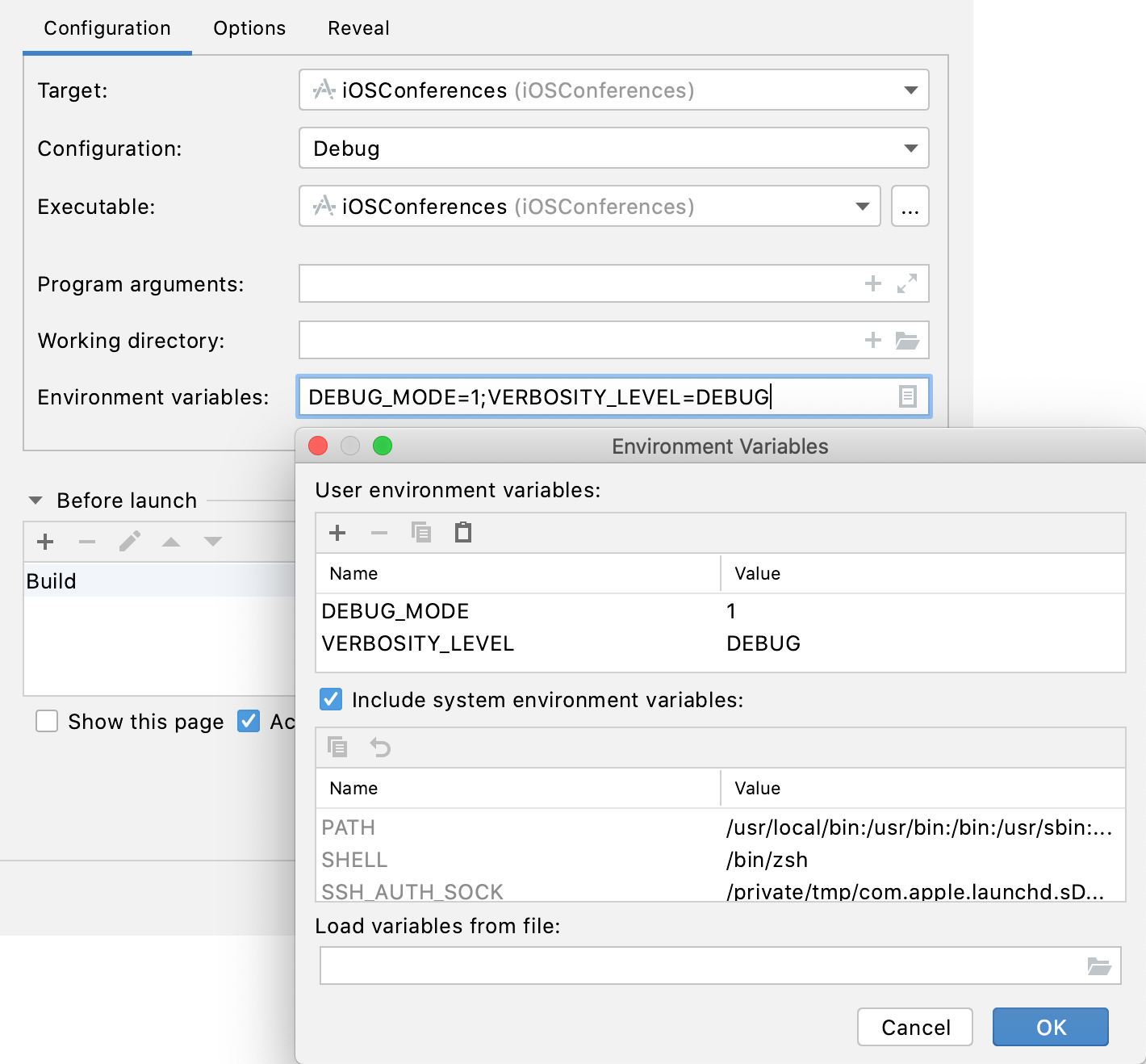Environment variables and program arguments
You can influence the runtime behavior of your app by adding program arguments and environment variables to run/debug configurations.
Add program arguments
From the main menu, select Run | Edit Configurations or choose Edit Configurations from the run/debug configurations selector on the toolbar.
In the Run/Debug Configurations dialog that opens, select a configuration where you want to pass the arguments.
Type the arguments in the Program arguments field. The arguments should be separated with spaces.

Click
to expand the text field, so you can view and edit the whole list of arguments.
Click
to insert a macro from the list. A macro is a sequence of computing instruction available as a single program statement. You can use macros, for example, for inserting the current file name, path, encoding, and so on:

You can access the list of program arguments using the CommandLine enumeration:
for arg in CommandLine.arguments {
print("\(arg)")
}Add environment variables
From the main menu, select Run | Edit Configurations or choose Edit Configurations from the run/debug configurations selector on the toolbar.
In the Run/Debug Configurations dialog, select a configuration you want to add the environment variables to.
Type the variable name and value:
<name>=<value>. If you add several variables, they should be separated with semicolons.Alternatively, click
and add the variable name and value to the User environment variables list.

In the dialog that opens, you can also see the list of available system environment variables. Clear the Include system environment variables checkbox if you don't want to use the system environment variables for the selected run/debug configuration.
note
The list of environment variables doesn't include the AppCode path variables.
You can read environment variables using the environment property of the ProcessInfo object:
if ProcessInfo.processInfo.environment["VERBOSITY_LEVEL"] == "DEBUG" {
//...
}